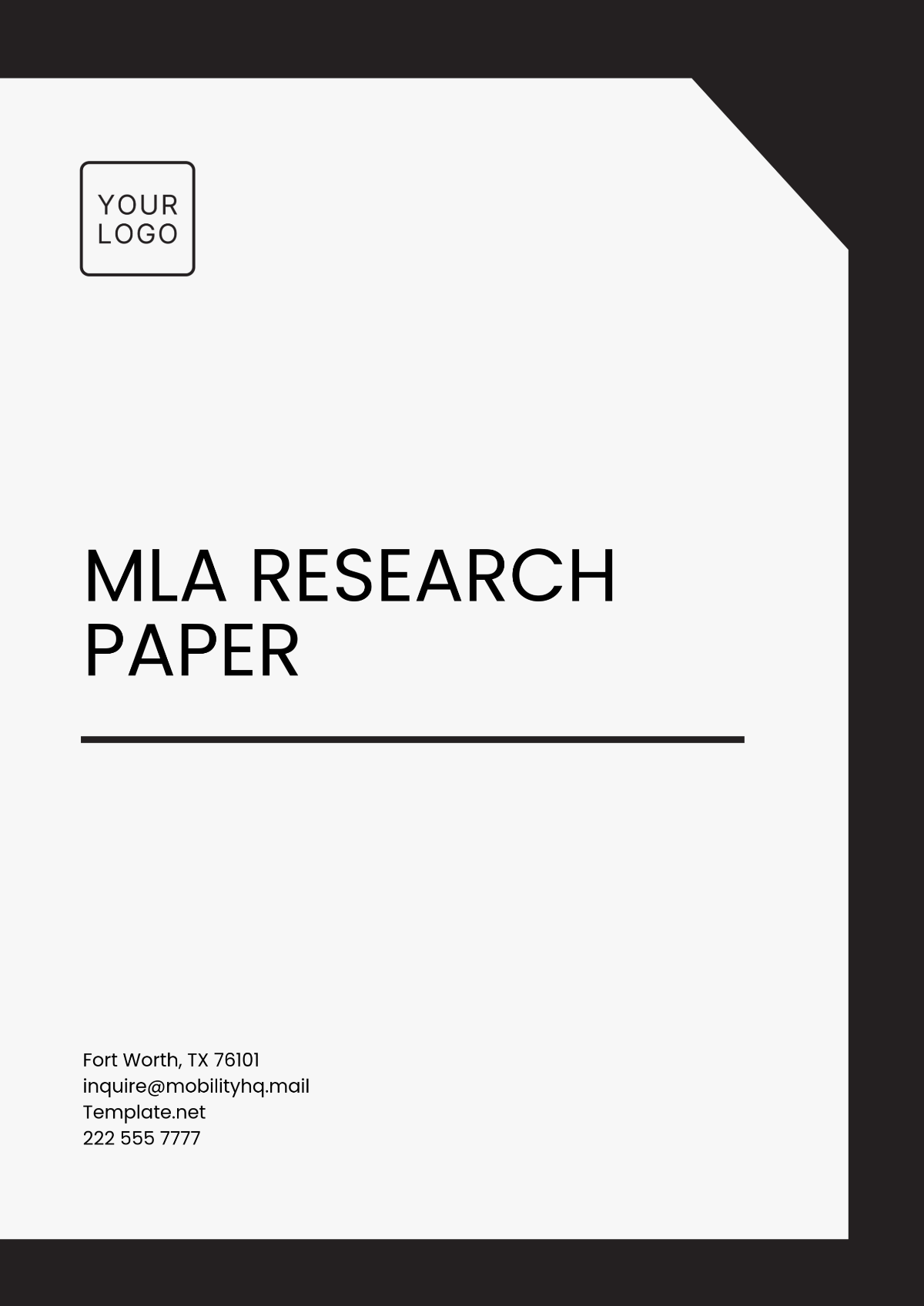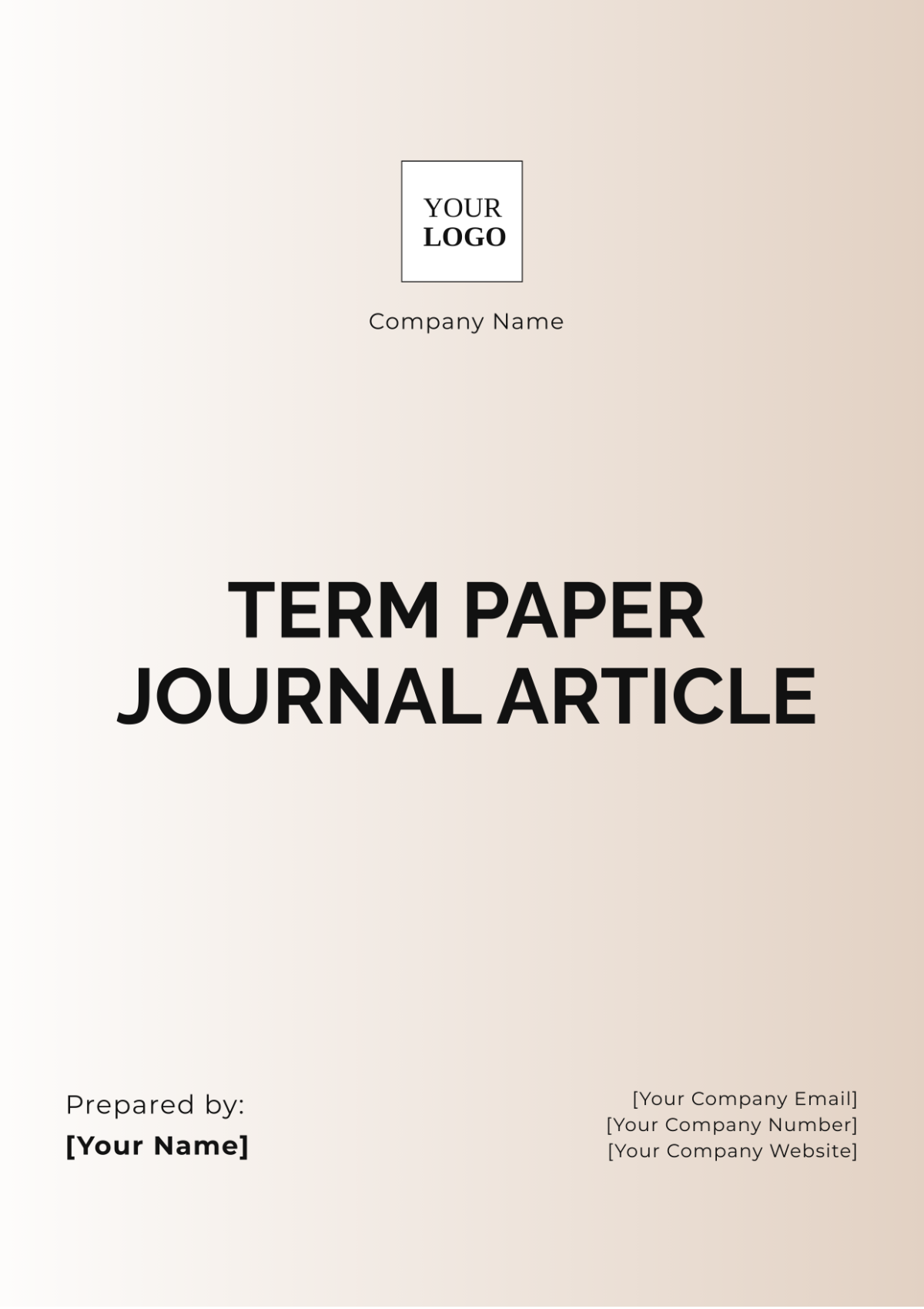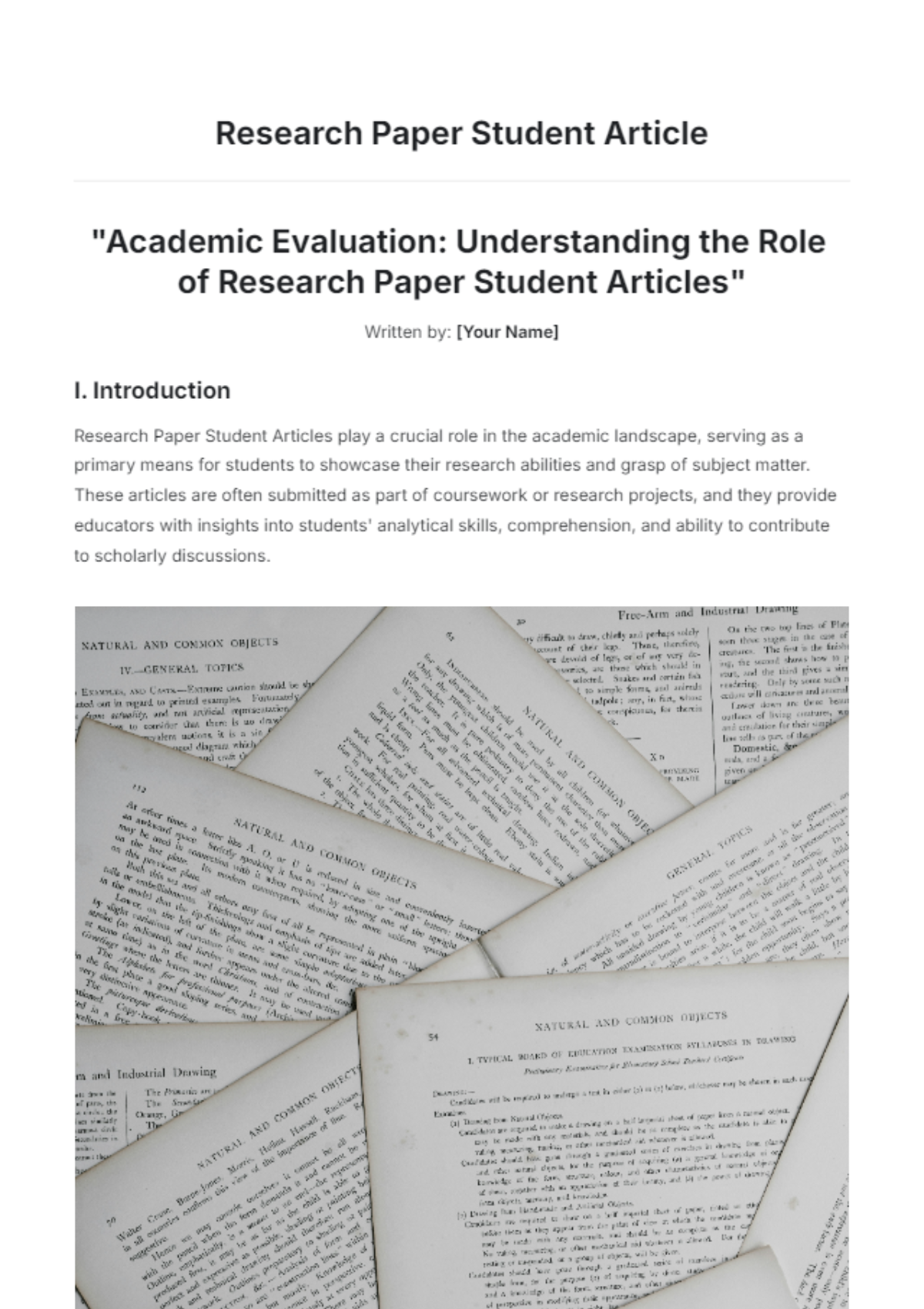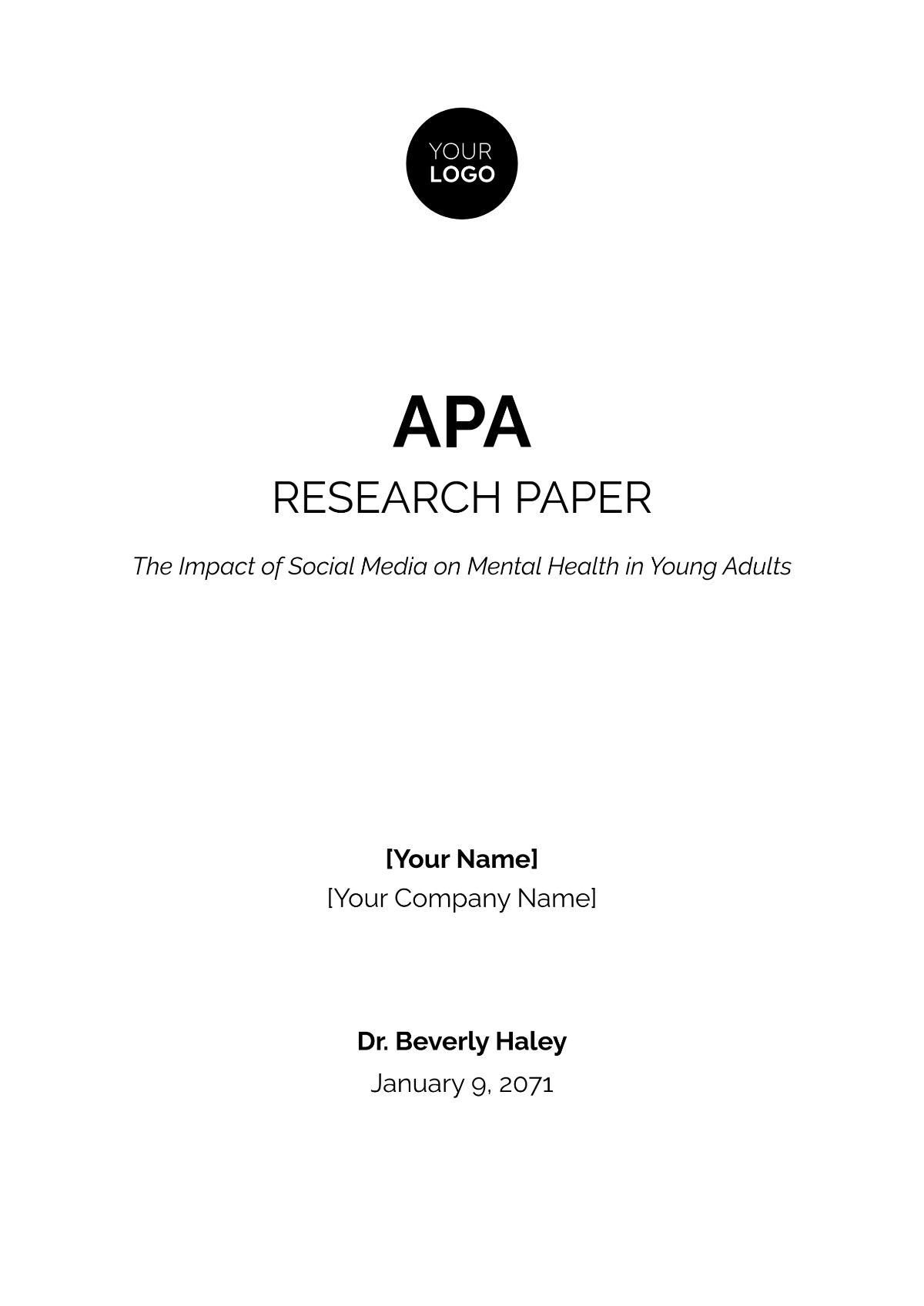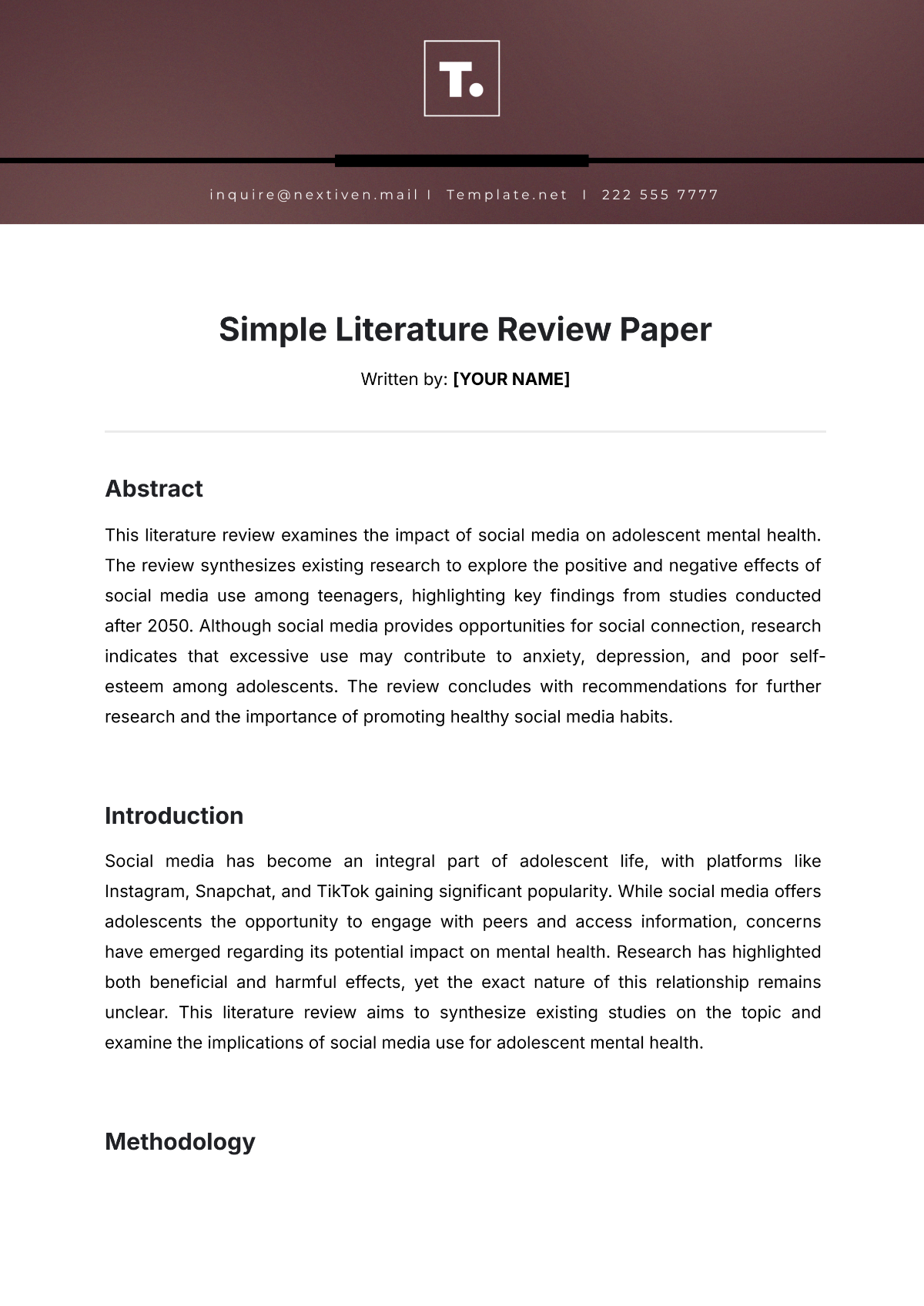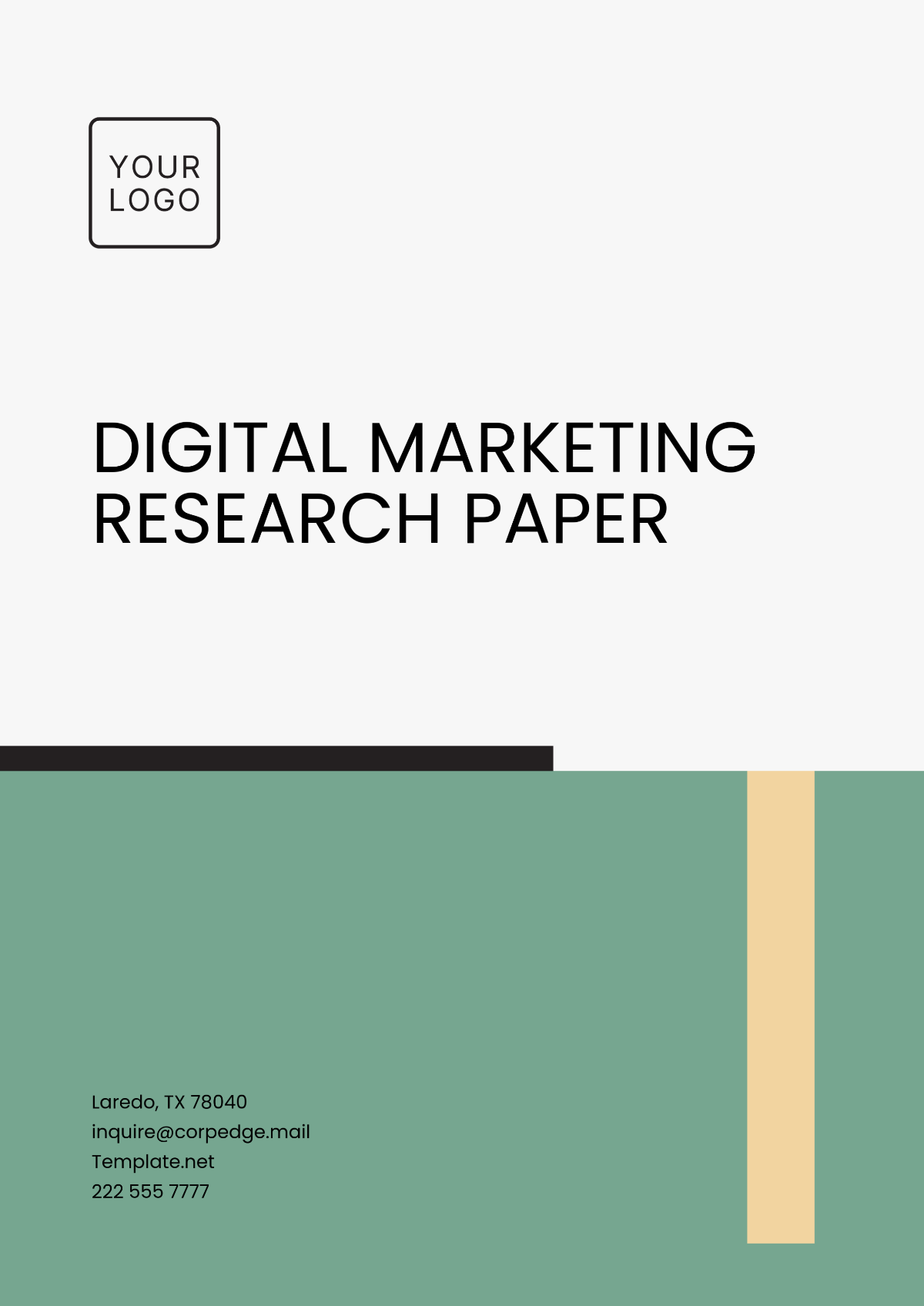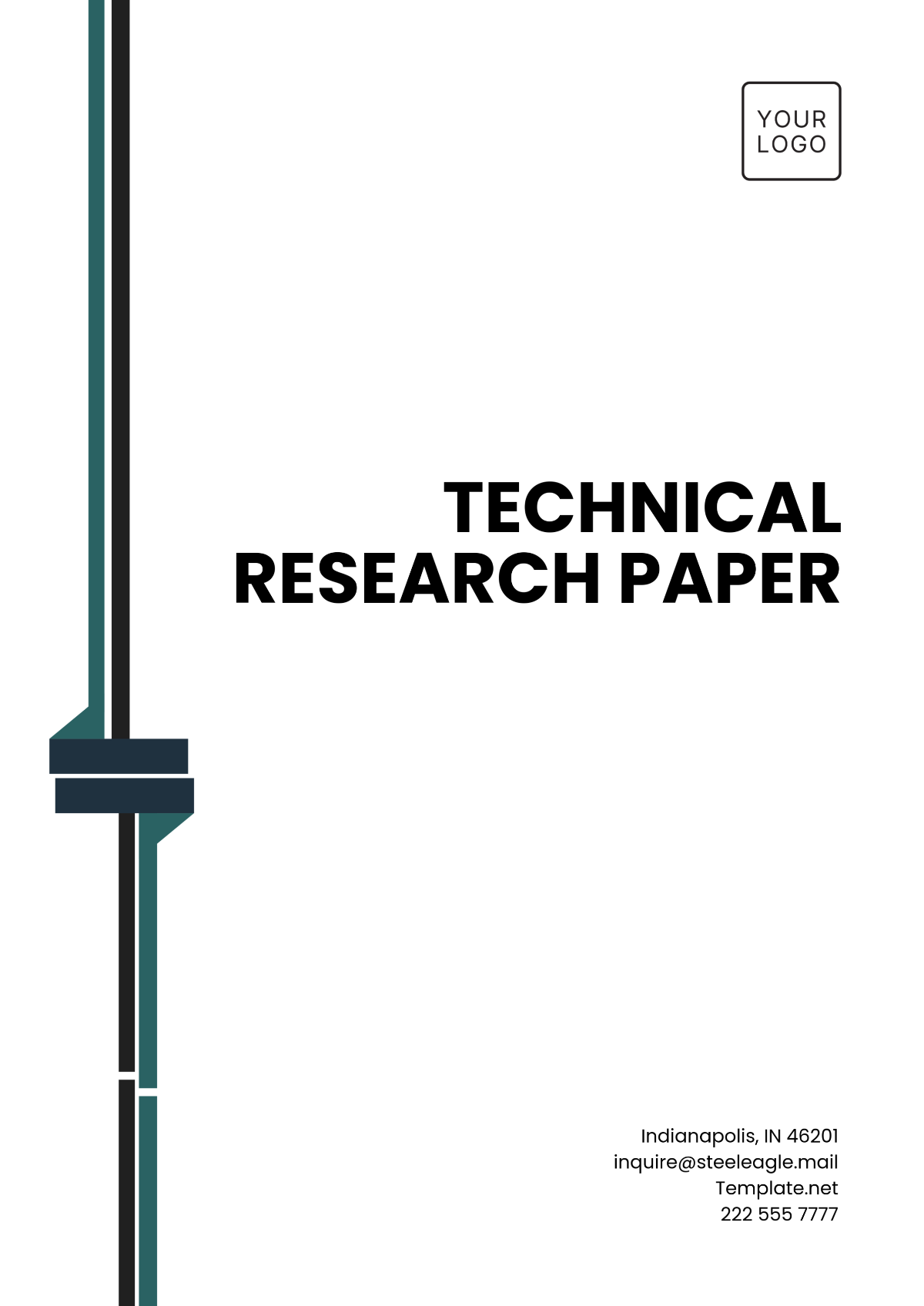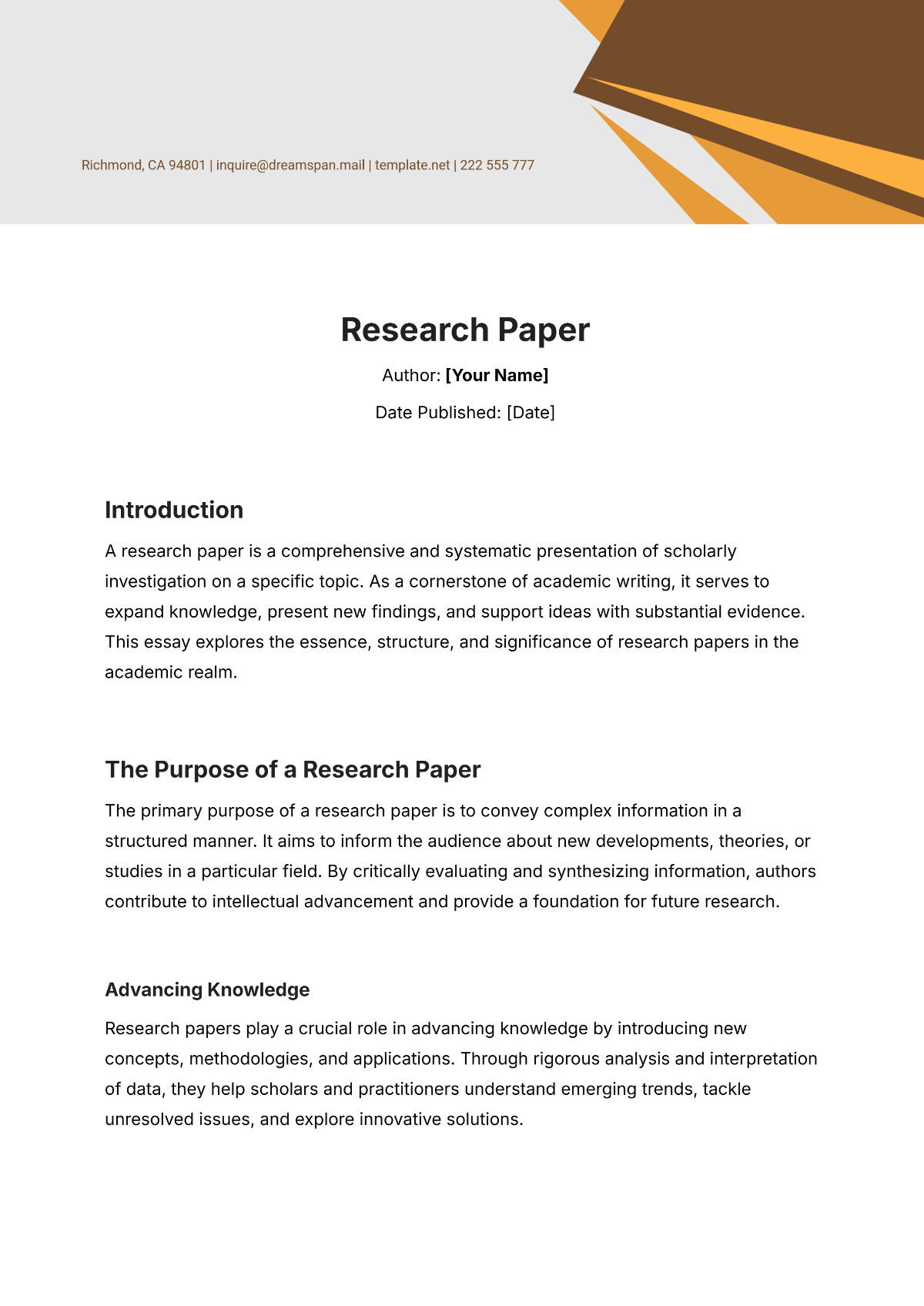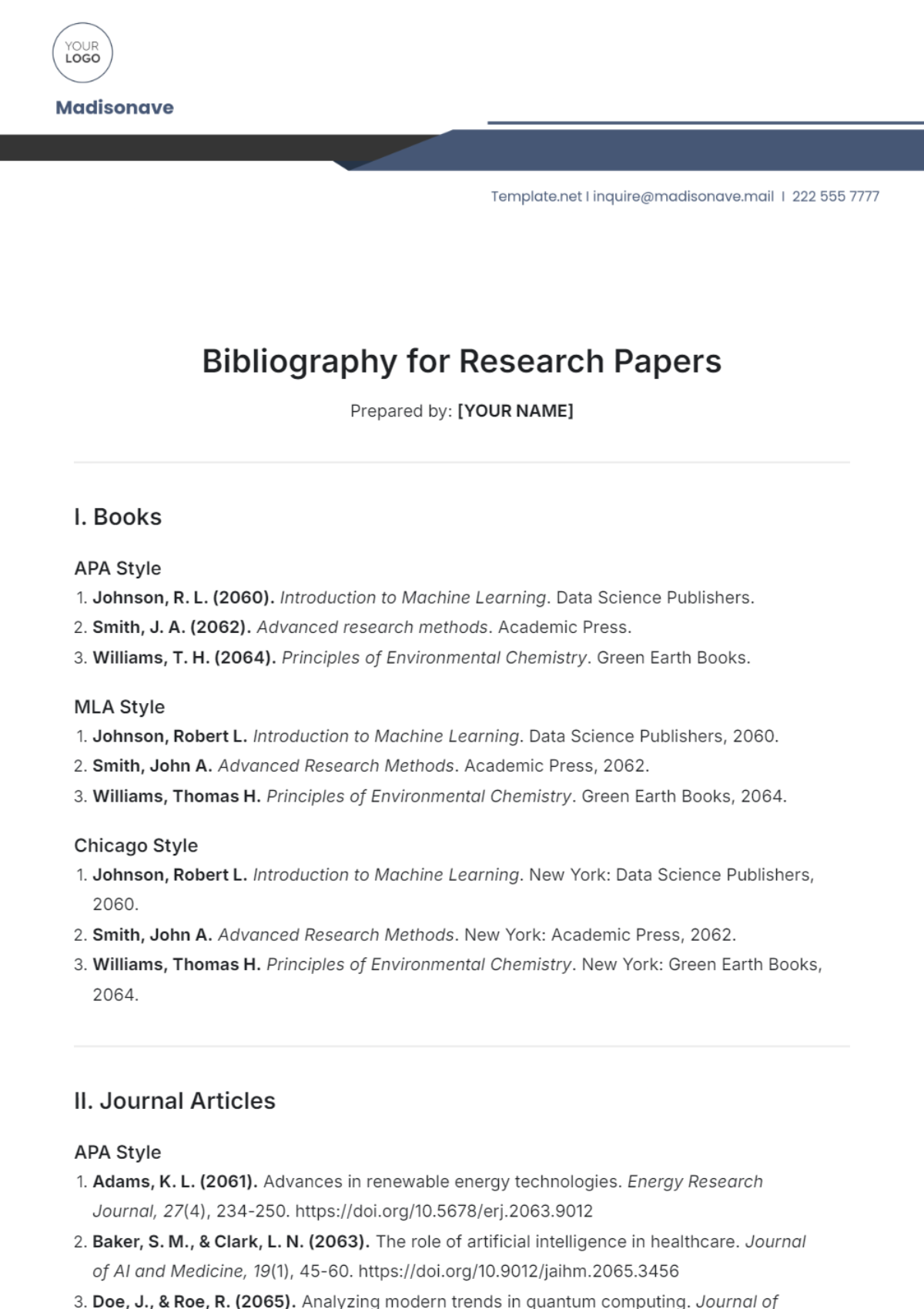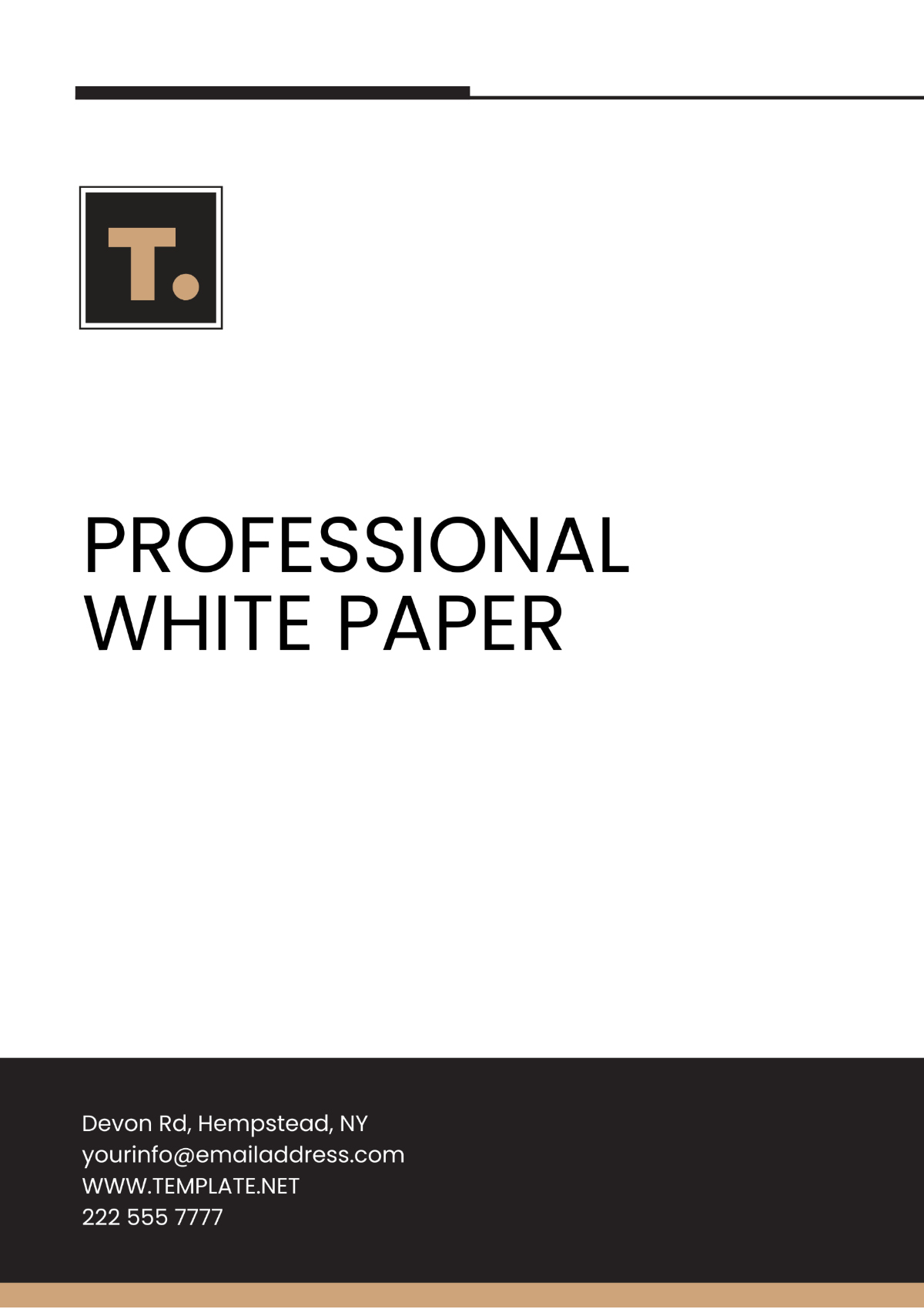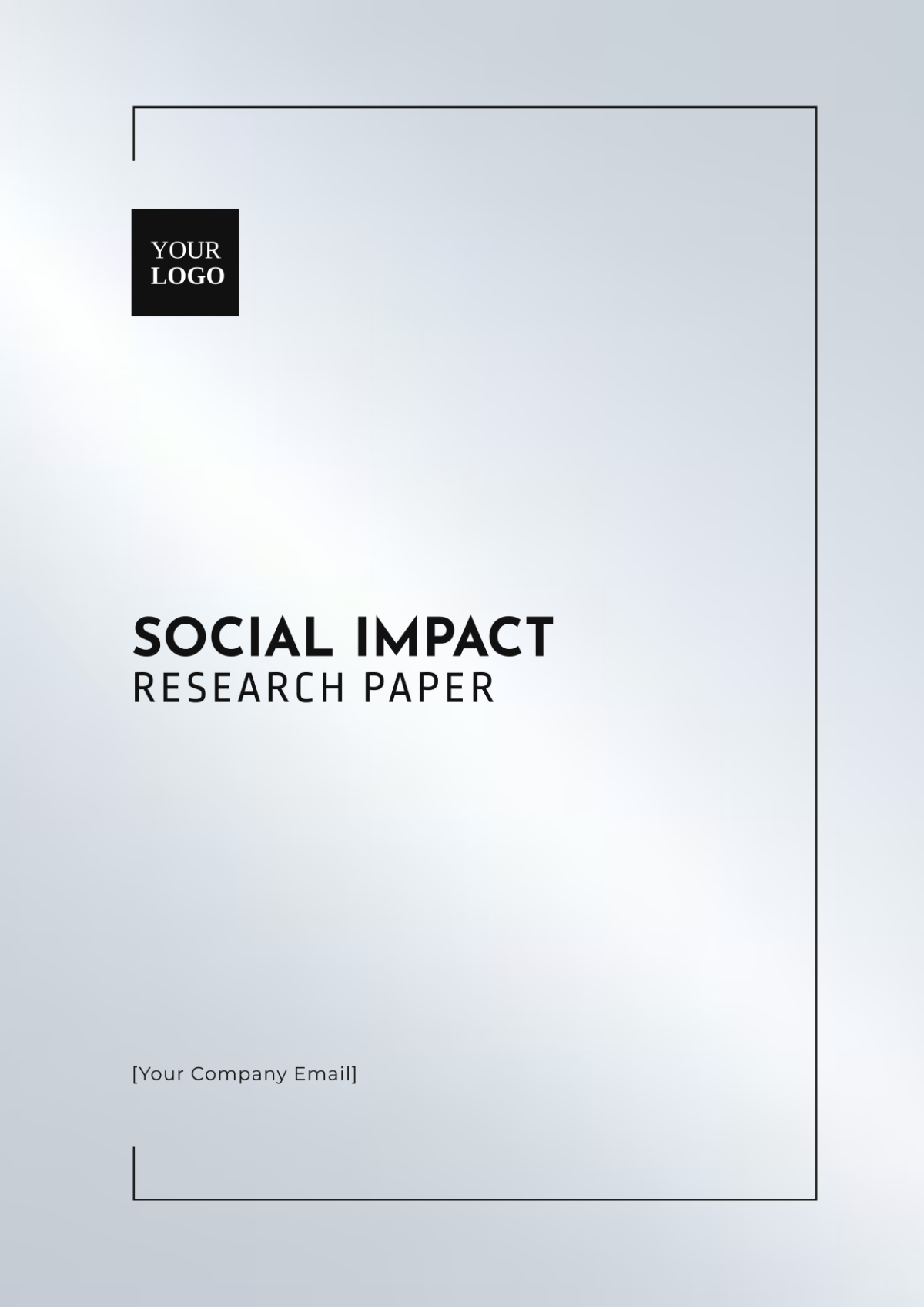Descriptive Format Research Paper
I. Title Page
Title: Provide a concise, descriptive title that reflects the research focus. The title should be specific and informative.
Author: List the name of the researcher(s).
Institution: Mention the institution where the research was conducted.
Example:
Title: The Impact of Urban Green Spaces on Mental Health in Mega Cities
Author: Dr. Jane Doe
Institution: The Urban Ecology Institute
II. Abstract
Write a summary of the research, typically 150–250 words.
Research question, methodology, main findings, and conclusions.
This section should be clear, and concise, and highlight the paper's essence.
Avoid technical jargon to make the abstract accessible to a broader audience.
Example:
This research investigates the relationship between urban green spaces and mental health in megacities, focusing on how these environments contribute to improved well-being. Through a mix of quantitative surveys and qualitative interviews, the study highlights significant findings regarding stress reduction and emotional resilience. The research underscores the necessity for urban planning to integrate green spaces to enhance citizens' mental health in rapidly urbanizing regions. This paper goes on to suggest strategic implementations for policymakers in urban development.
III. Introduction
Begin with a brief introduction to the topic, outlining the significance of the research.
Provide background information to give context and explain the importance of the study.
State the research question or hypothesis, as well as the aim of the study.
Offer a brief review of relevant literature and mention any research gaps that the study intends to fill.
Example:
As the global population increasingly gravitates towards urban centers, understanding the role of green spaces becomes crucial. These areas offer not only aesthetic pleasure but also vital health benefits. This paper explores the significance of urban green spaces in enhancing mental health, particularly in megacities, by reviewing existing literature and presenting new empirical data.
IV. Methodology
Data Collection: Describe how data was collected, including the methods used (surveys, interviews, experiments, etc.), the sample size, and the time frame for data collection.
Case Study Selection: If case studies are used, explain the criteria for their selection and why these particular cases are relevant to the research.
Be specific about the tools and techniques used for data analysis, ensuring the methodology is reproducible.
Example:
A. Data Collection
Data were gathered through a mixed-methods approach:
Conducted online surveys with 1,500 participants from five mega cities between January 2060 and June 2061.
Carried out in-depth interviews with 200 individuals identified as frequent users of urban parks.
B. Case Study Selection
Five megacities - New York, Tokyo, Shanghai, São Paulo, and Lagos - were selected based on their population size and varying levels of existing green space per capita.
V. Body
A. Urban Green Spaces: Definition and Purpose: Define what constitutes urban green spaces and their various functions within cities.
B. Mental Health Benefits: Discuss the mental health benefits associated with urban green spaces, referencing research findings and surveys conducted.
C. Urban Challenges and Policy Implementation: Identify challenges in urban planning related to green spaces, such as land scarcity, funding, and other barriers. Present case studies or successful policy approaches for overcoming these issues.
Example:
A. Urban Green Spaces: Definition and Purpose
Urban green spaces refer to vegetated land within city boundaries, including parks, gardens, and recreational areas, serving as vital ecological and social functionaries.
B. Mental Health Benefits
The mental health benefits are substantial, with surveyed participants reporting decreased stress and enhanced cognitive functions due to regular interaction with green spaces.
C. Urban Challenges and Policy Implementation
Challenges include land scarcity and funding constraints. Case studies suggest successful policy approaches combining green space initiatives with urban expansion strategies.
VI. Results/Findings
Present the key findings from your research, typically using tables, charts, or figures.
Include descriptive data, such as statistical results, qualitative findings, and any patterns that were identified in the research.
Interpret the data in a clear and organized manner.
Example:
The research unveiled significant patterns:
Mega City | Average Weekly Time in Green Spaces (Hours) | Reported Improvement in Mental Health (%) |
|---|---|---|
New York | 3.5 | 65 |
Tokyo | 2.1 | 54 |
Shanghai | 4.0 | 72 |
São Paulo | 2.6 | 63 |
Lagos | 1.8 | 48 |
VII. Conclusion
Summarize the key findings of the research and their implications.
Reiterate the importance of the research and how it addresses the identified gap in the literature.
Suggest practical applications of the research and provide recommendations for future studies in the field.
Example:
The study concludes that urban green spaces play a vital role in promoting mental health across megacities. To capitalize on this, urban planners and policymakers must prioritize the integration of green spaces in urban designs. Further research is suggested to explore long-term impacts on different demographic groups and the economic potential of increased green space initiatives.
VIII. References
List all the sources referenced throughout the paper in a specific citation style (APA, MLA, Chicago, etc.).
Include books, articles, websites, and other materials that inform your research.
Make sure to follow the proper formatting guidelines for each type of source.
Brown, L., & Smith, J. (2060). Urban Health and Ecology. New York: Green Press.
Johnson, T. (2061). "Mental Health in Emerging Urban Landscapes." Journal of Urban Psychology, 34(2), 123-145.
Zhang, H. (2061). "Green Cities for a Sustainable Future." International Journal of Ecology, 45(3), 78-89.







